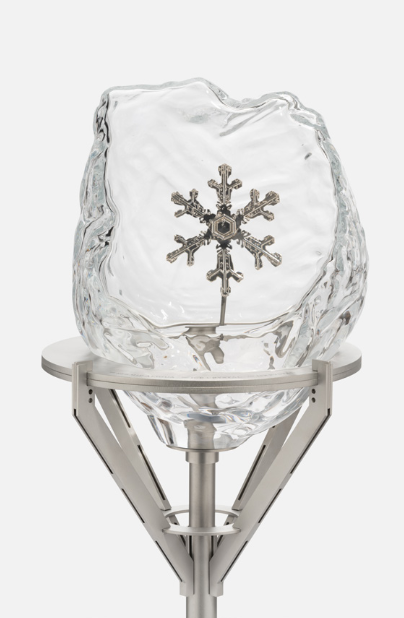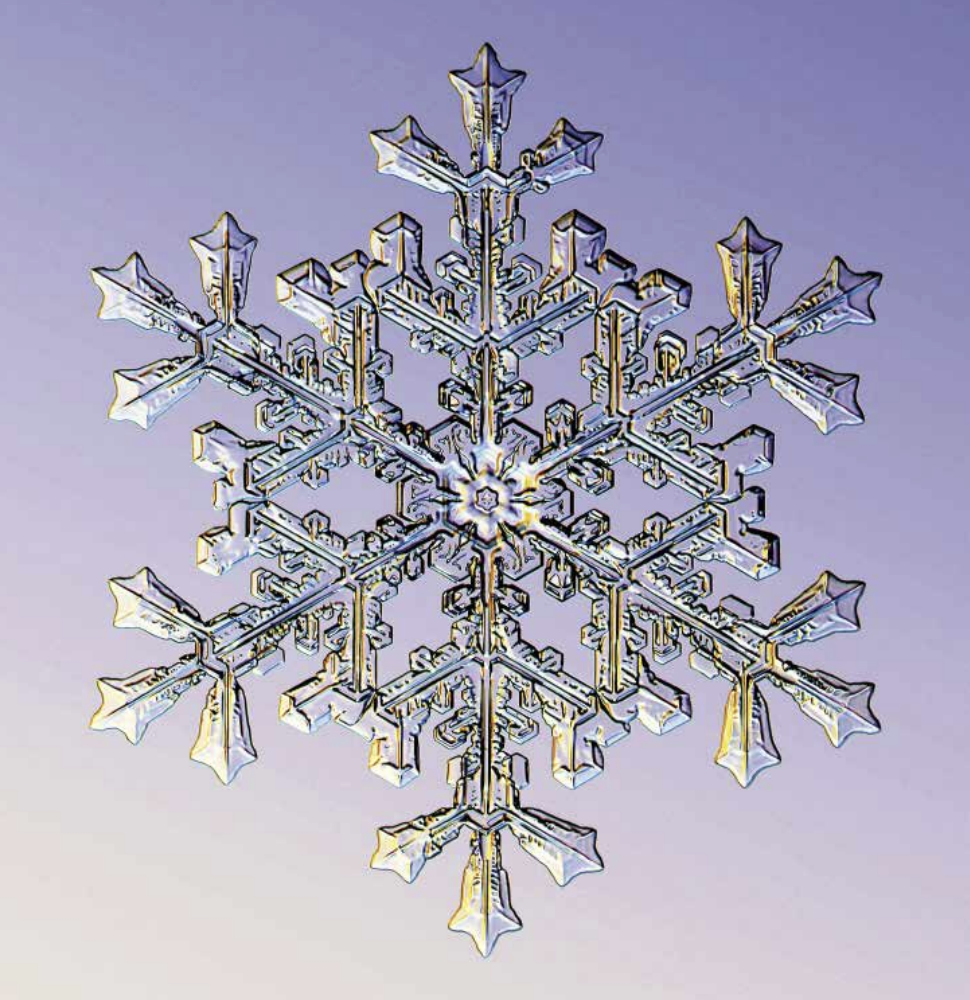
ICE CRYSTALS
Snowflakes consist of ice crystals that have gathered in the topmost cold layer of a cloud.
Ice crystals are formed from water molecules hitting a particle of stardust or a small grain of salt that they freeze to.
All ice crystals have the same form. They are symmetrically hexagonal.
If the air humidity is low, there are few water molecules. Is it high there are many water molecules.
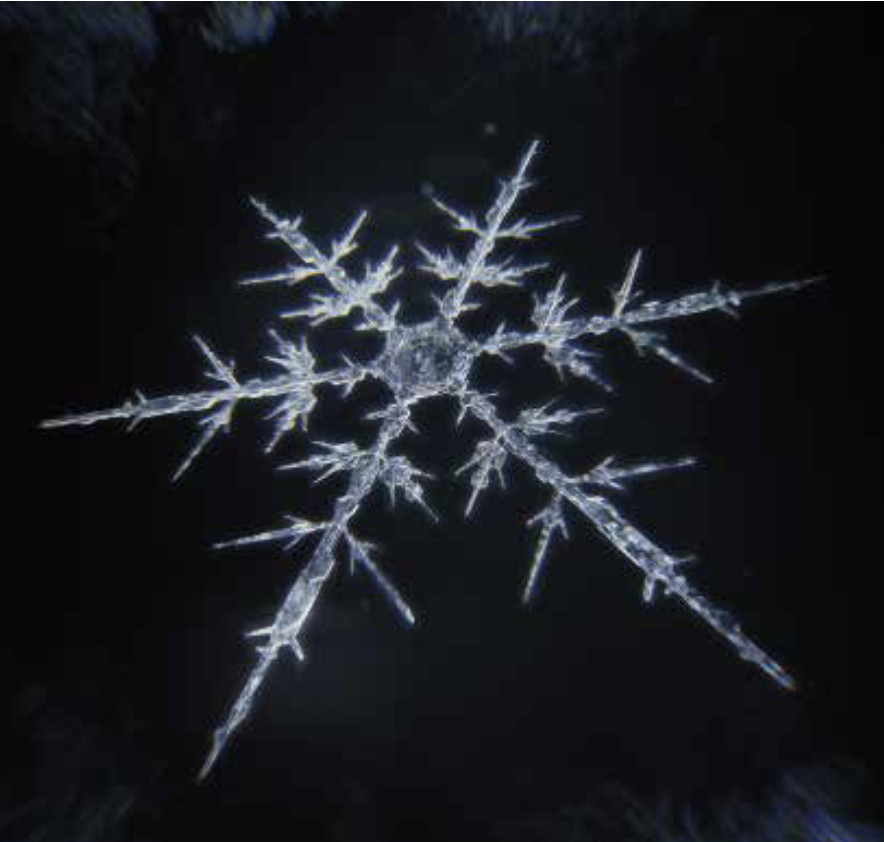
If the air humidity is low, the ice crystal is formed slowly and it becomes serrated. If it is high, the crystal is formed faster and becomes edgy. Draw a serrated and an edgy crystal. Find inspiration on pages 14-17 in the book.
The ice crystal is formed in the cloud. It consists of water molecules. The warmer the temperature of the cloud, the more water molecules it contains. Ice crystals therefore grow more quickly in warm clouds and develop more details.
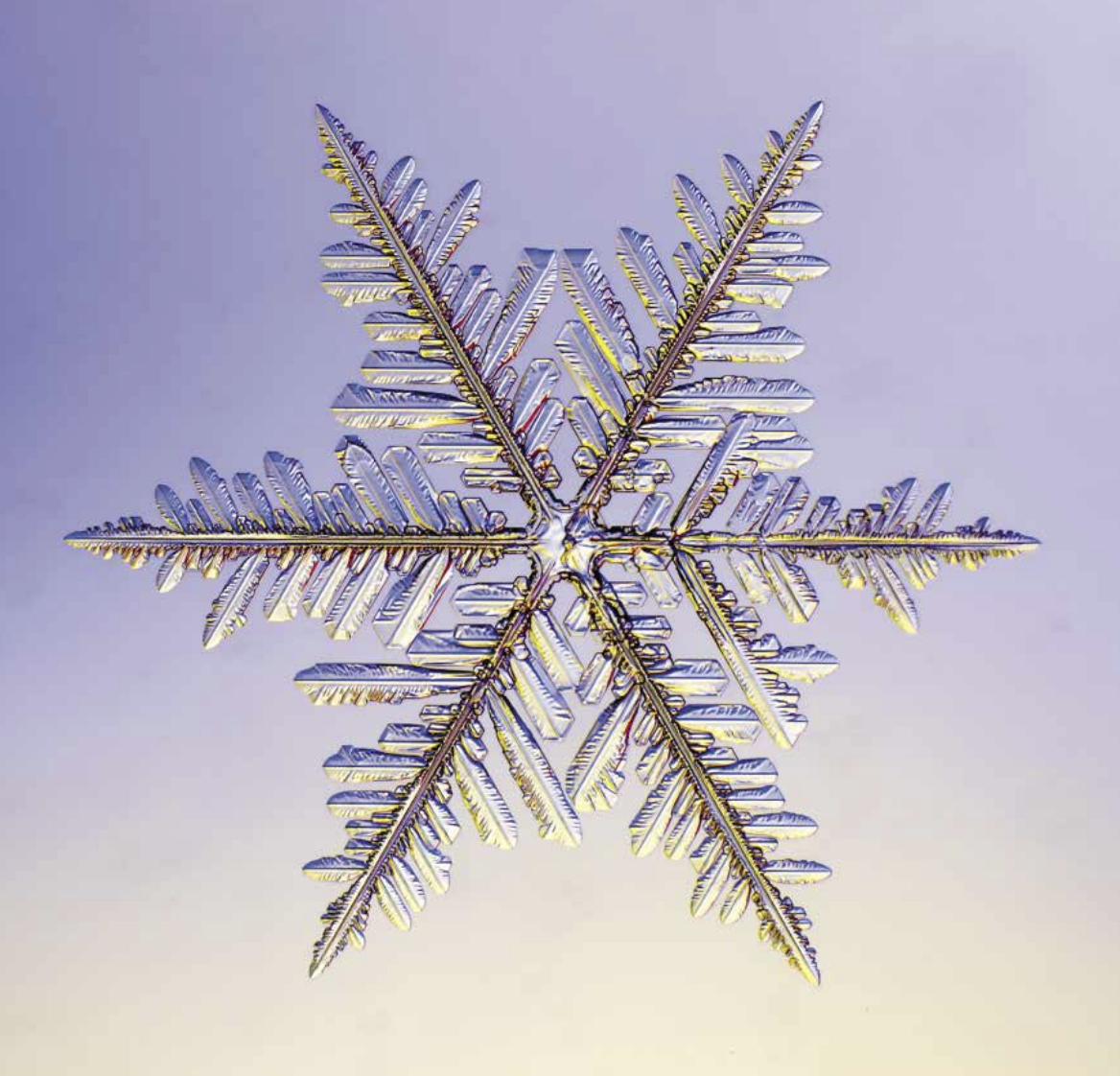
Ice crystals with few details.

Ice crystals with many details.
How do temperature and air humidity affect the forming of ice crystals?
When do the ice flakes fall down from the cloud?
Snow consists of ice crystals. Ice crystals consist of water. Water has no colour.
When the light shines on the ice, it is reflected in the ice crystals, and the eye sees it as the colour white.
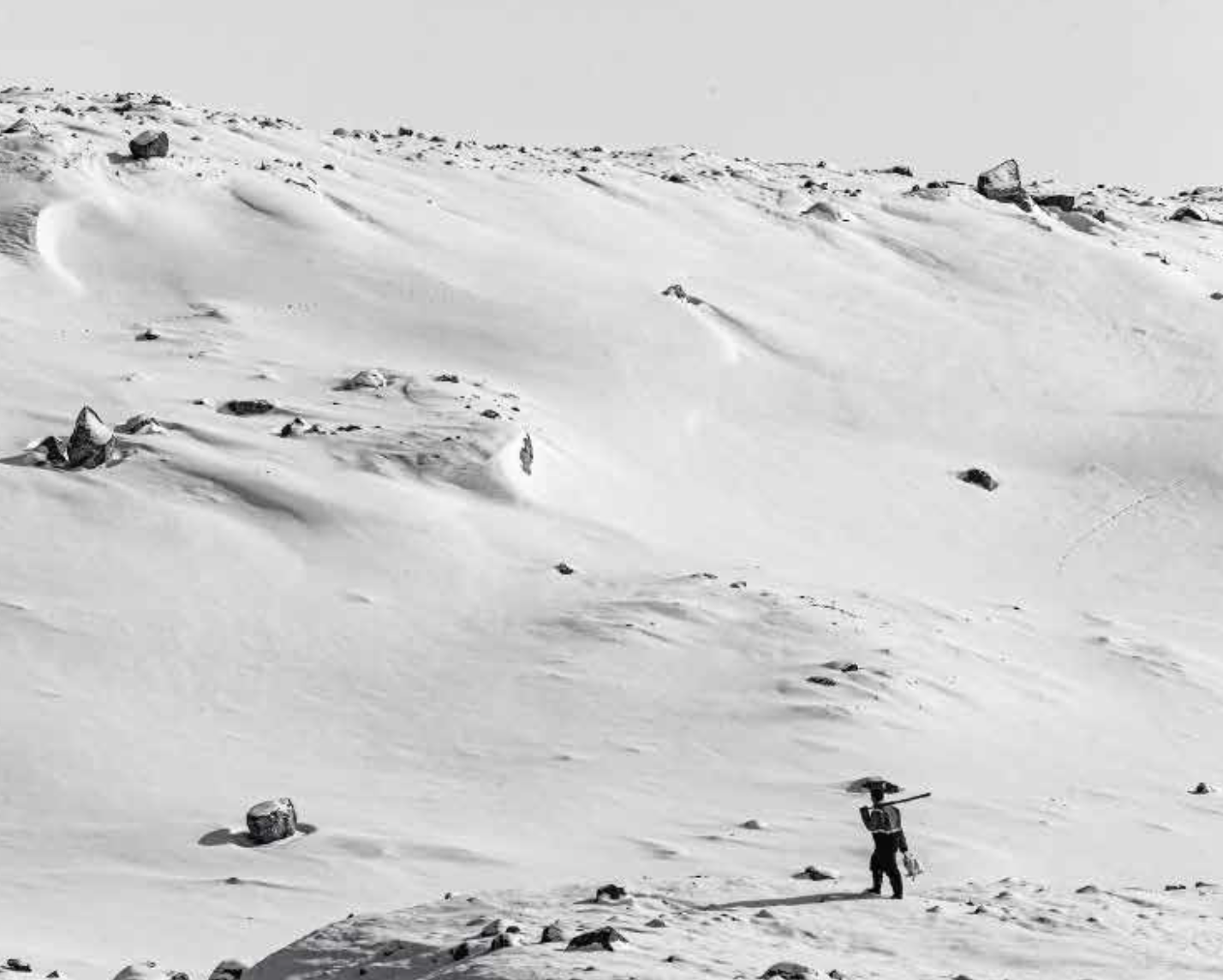
What does snow consist of?
Why is the snow white?
What is the person in the picture doing?
Answer with a text, drawing or audio file:
Snowflakes consist of ice crystals that have gathered in the topmost cold layer of a cloud.
Ice crystals are formed from water molecules hitting a particle of stardust or a small grain of salt that they freeze to.
All ice crystals have the same form. They are symmetrically hexagonal.
If the air humidity is low, there are few water molecules. Is it high there are many water molecules.

If the air humidity is low, the ice crystal is formed slowly and it becomes serrated. If it is high, the crystal is formed faster and becomes edgy. Draw a serrated and an edgy crystal. Find inspiration on pages 14-17 in the book.
The ice crystal is formed in the cloud. It consists of water molecules. The warmer the temperature of the cloud, the more water molecules it contains. Ice crystals therefore grow more quickly in warm clouds and develop more details.

Ice crystals with few details.

Ice crystals with many details.
How do temperature and air humidity affect the forming of ice crystals?
When do the ice flakes fall down from the cloud?
Snow consists of ice crystals. Ice crystals consist of water. Water has no colour.
When the light shines on the ice, it is reflected in the ice crystals, and the eye sees it as the colour white.

What does snow consist of?
Why is the snow white?
What is the person in the picture doing?
Answer with a text, drawing or audio file:

